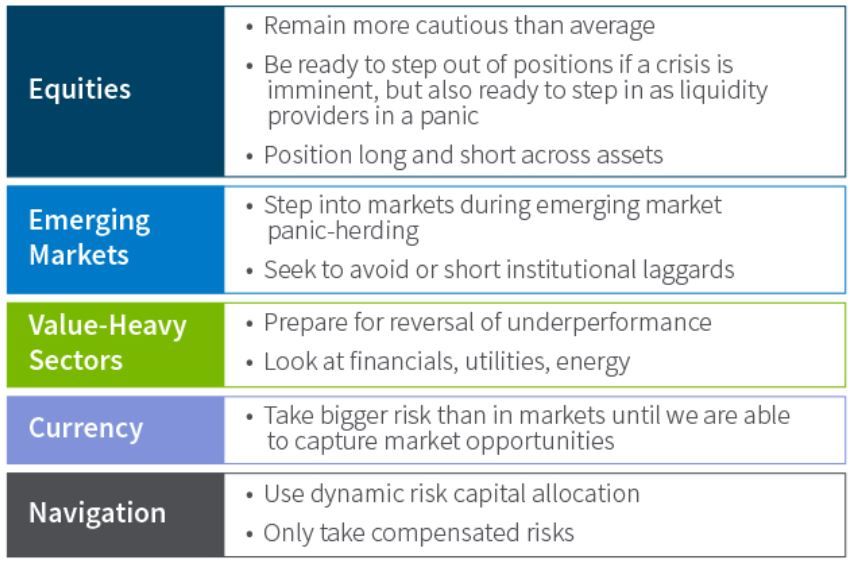
As central banks have embarked on a disjointed unwinding of their balance sheets, it is easy to see that the day of reckoning is upon us. But what does it mean for investors?
In bonds, equities, and currencies, we have seen large price discrepancies from fundamental values. But we are beginning to see moves toward fundamental value on several fronts.
This is due in part to a prominent component of the current market environment—rising interest rates. Central banks raise rates to dampen potential market bubbles and to arm themselves with the ability to lower rates in the future if necessary.
When markets see central banks are no longer willing or able to protect prices, risk premia of long-term debt and other risky assets will likely jump, suddenly suppressing prices. And as we have seen previously, central banks will rush in to lower short-term interest rates if markets start to shake.
Bonds
This will punctuate the bond market with volatility that has been absent for many years. We are positioning the portfolio to enable liquidity provision in panic situations, particularly in corporate bonds that are vulnerable to liquidity shocks and packaged in purportedly liquid exchange-traded portfolios (ETPs).
We must be prepared to exploit these opportunities as long as we avoid positioning ourselves on the wrong side of fundamental value.
Equities
Equities offer significant opportunities in long-term value versus price, but we are also keenly aware of the necessity to navigate the waves that we foresee.
We want to be more cautious than average when exploiting these opportunities and be ready to step out of positions if a crisis is imminent.
It is to our benefit that some prices are below fundamental values and provide opportunities to be long while others are above, enabling us to be short. We will position long and short across assets as we build larger long exposure in attractive equity markets.
Emerging markets generally have a more solid reserve situation now, but there is a widespread worry that their vulnerability can spark pessimism for seemingly no substantial reason. Many emerging markets have increased significantly in value after adopting institutions supportive of wealth creation.
We want to step into these markets during emerging market panic-herding while avoiding or even shorting those that remain institutional laggards.
Finally, as markets normalize, value will likely outperform , reversing in some measure value's long period of underperformance. We should exploit this reversion by positioning ourselves in value-heavy sectors such as financial, utilities, and energy. We may opportunistically consider value- and growth-style indices to dynamically manage our value style tilt.
Currency
Currency, which is uncorrelated with the broad portfolio over time, has been and will continue to be an important source of return. In this environment, its lack of correlation with markets allows it to be an engine of return that is outside the realm of our market concerns.
We should therefore expect to take bigger risk in this space than in markets until we are able to capture market opportunities.
Navigating the Crisis
When the day of reckoning arrives, hedge funds, algorithmic traders, and other high-frequency investors will be stepping in to provide liquidity. We will need to navigate those forces, dynamically shifting across opportunities as needed.
We will only take risks when and where we think they're compensated for, and only in proportion to the compensation we think they'll generate.
Where Opportunities May Emerge
Brian Singer, CFAPartner & Portfolio ManagerWilliam Blair Investment Management
Tipp: Dieser Beitrag ist auch im "Investment Insights"-Blog von William Blair verfügbar.
William Blair Updates per E-Mail erhalten



